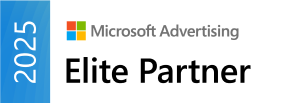Glossary
Comparison Shopping Services – can show shopping ads in Google search results, the same way Google Shopping does, but with main benefits, such as:
- Cheaper Bids – merchants will receive approximately 20% reduction in Cost Per Clicks (CPCs). This is thanks to Google Shopping needing to remain profitable, whilst also providing a competitive platform.
- Bidding Power – with reduced costs comes the opportunity for account growth. The alternative to keeping the savings made from reduced CPCs is to reinvest the savings into the account and if done effectively, generate more Impressions, Clicks and Conversions (sales).
A product feed optimization is the process of improving and enriching your product feeds in order to increase the results achieved by your online sales efforts across your sales channels. Effective product feed optimization will involve improving the quality of the feed, the source of the data and ensuring that you aren’t just meeting the requirements of channels like Facebook, Google and Amazon – but are standing out from the crowd with high-quality, eye-catching listings that will engage your audience.
Single Product Ad Groups – ad groups within your Google Shopping campaign that only contain one product. Using SPAGs is a way to gain more control and provide better performance due to appearance in relevant searches. If you sell hundreds or more products, creating and maintaining SPAG campaigns may be a nightmare – that problem is easily solved with Sembot Solutions.
Single Keyword Ad Groups – ad groups with just one keyword in them. SKAGs are a way for you to gain more control and achieve higher performance from your Google Ads account. By pairing your keywords into their own unique ad groups, you can make sure that the keywords you’re bidding on match the search terms you’re paying for.
Single Keyword Ad Group method is one of the fastest ways to elevate click-through-rates, quality scores, and most importantly, the results. With SKAGs, you’re effectively reducing your discrepancy ratios from search to keyword and from keyword to ad.




